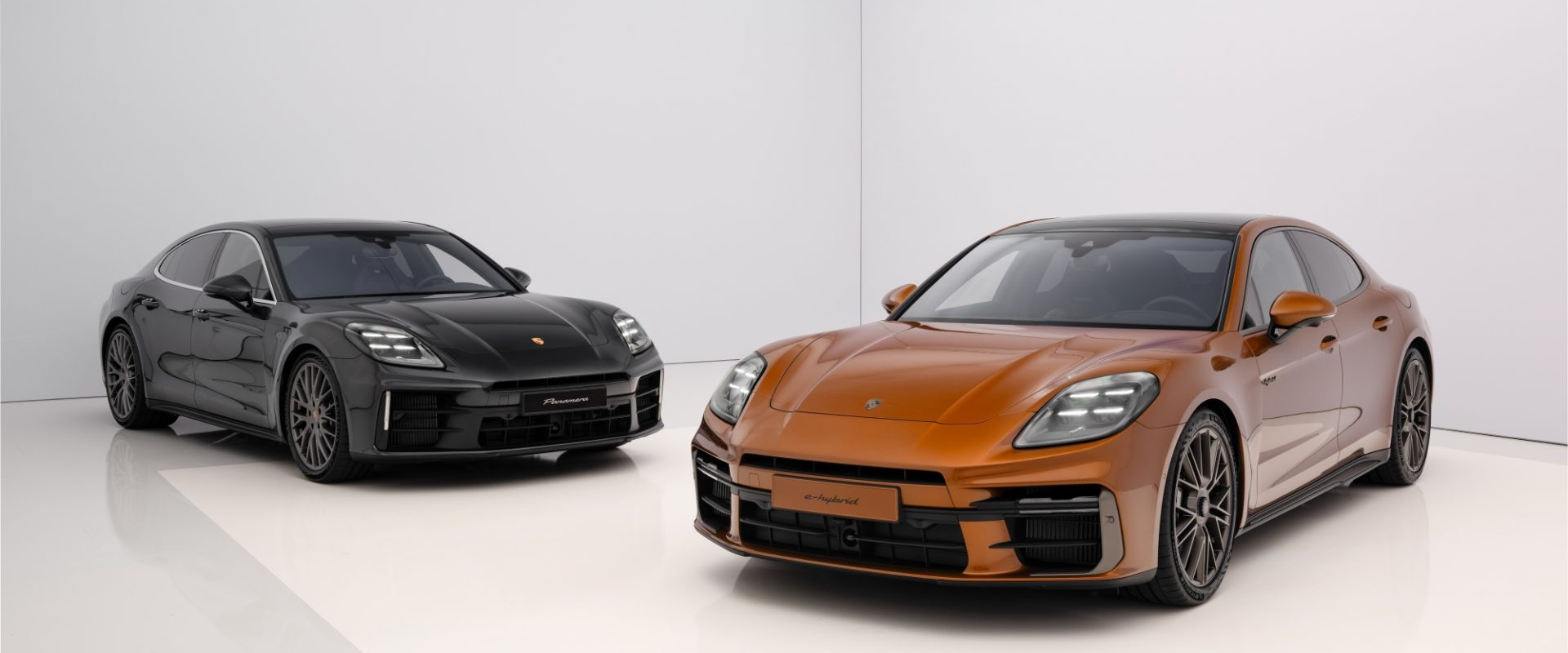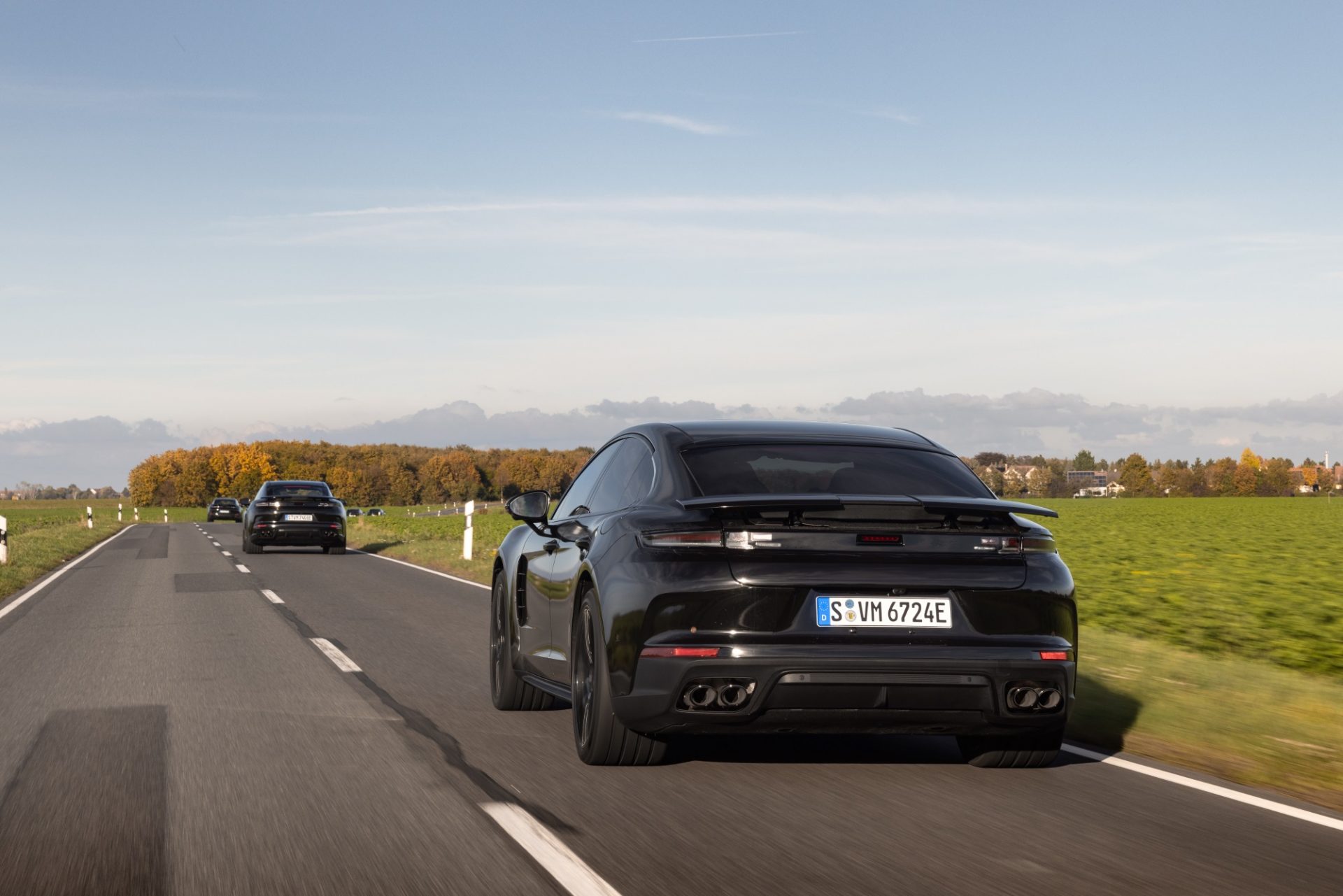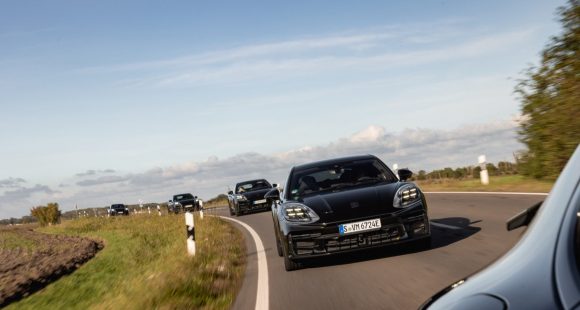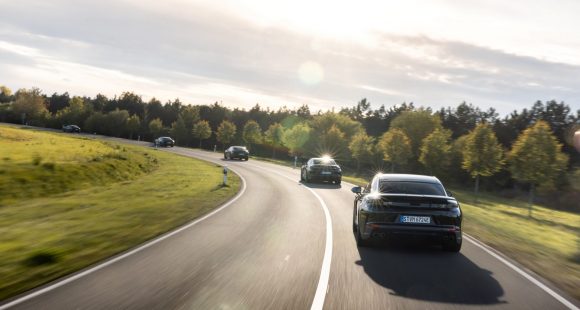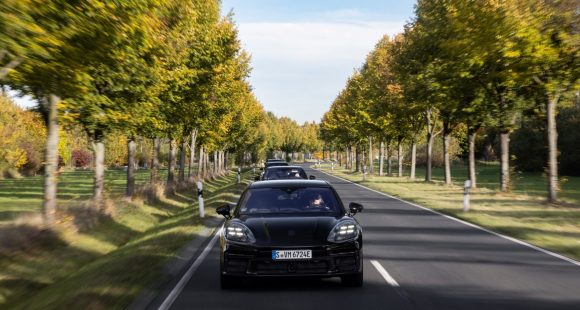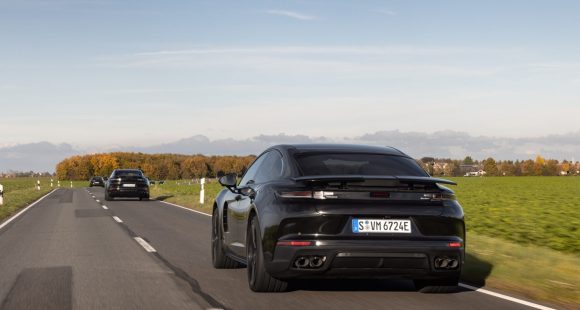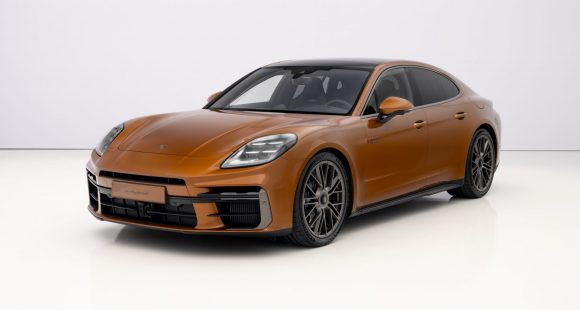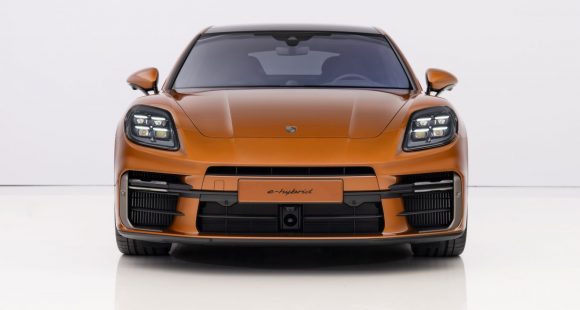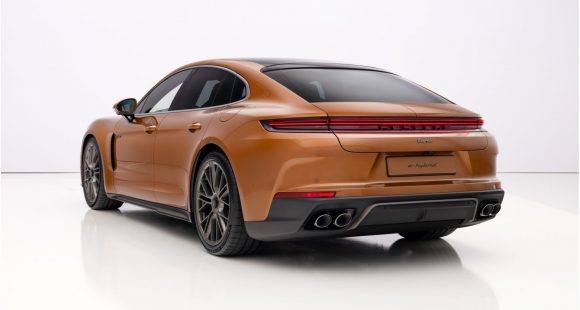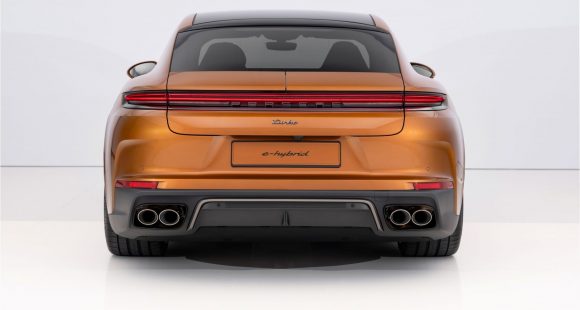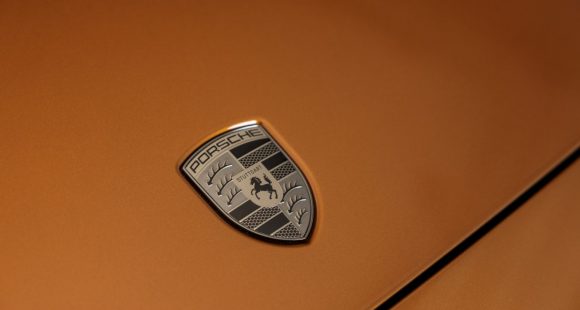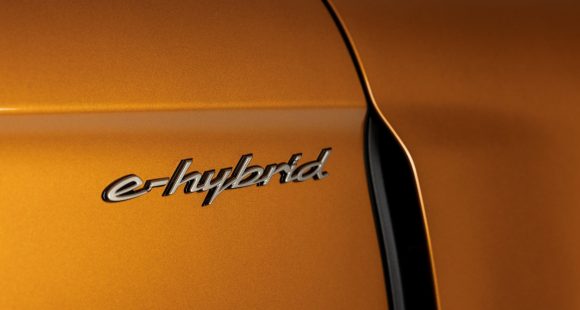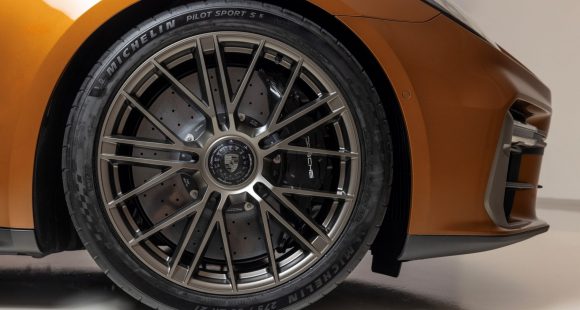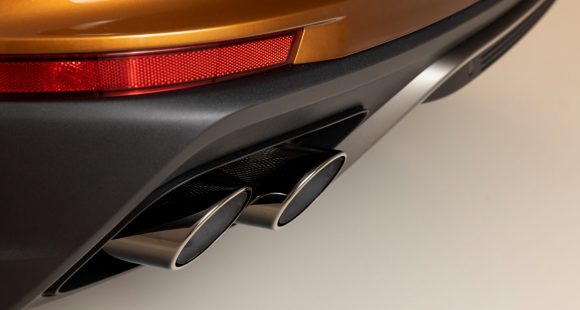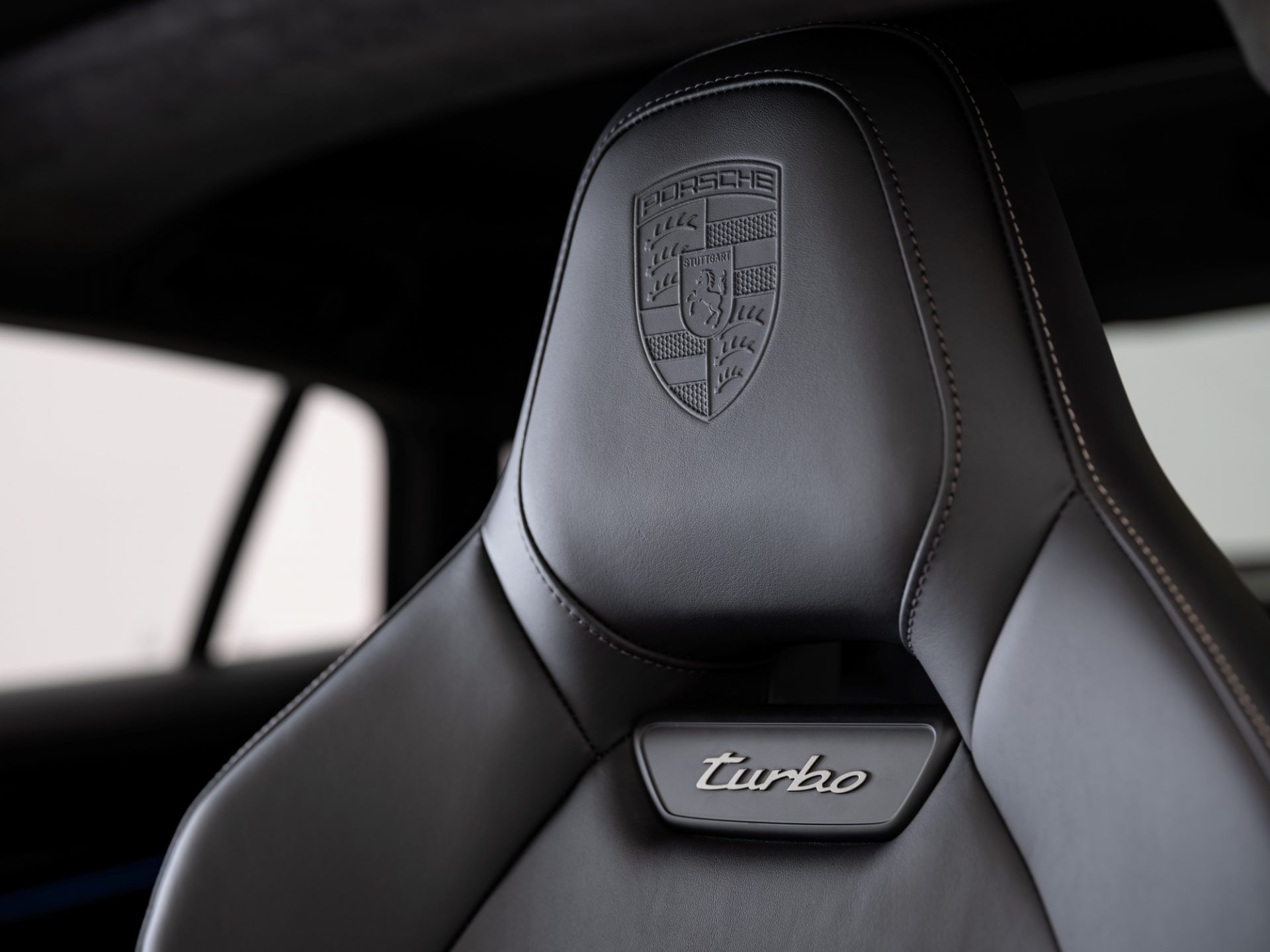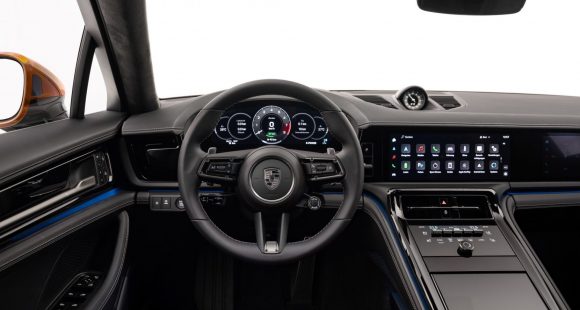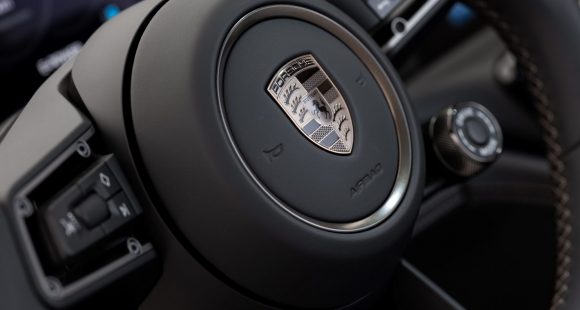We Flew to Germany to Check out Porsche’s Third-Gen Panamera
November 24, 2023The Porsche Panamera is officially entering its third generation for the 2024 model year, offering more tech, more luxury and enhanced powertrains; and we were invited out to the Porsche’s assembly plant in Leipzig, Germany for a firsthand look.
We’ll touch on the actual looks in just a bit, but just to get the obvious out of the way: Yes, the Panamera remains Porsche’s four-door sport luxury sedan, so if you’re at all familiar with the current and first-gen models, you’ll feel right at home. Now, that isn’t to say the G3 doesn’t bring about meaningful change to the nameplate– it’s just to say this level-up isn’t a total reformation of the Panamera as we know it.
The Panamera and Panamera 4 models will be available at launch, both partially defined by a turbocharged 2.9-liter V6 engine. Optimized boost pressure, injection volume and ignition timing results in 348 horsepower and 368 lb-ft of torque, increases of 23 HP and 37 lb-ft when compared to the current gen. Expect a 0-60 time around 5.0-seconds and, given enough track, a top speed of 169 mph; step up to the all-wheel drive Panamera 4 and expect 4.7-second 0-60 launches and a top speed of 168 mph.
Where things get really interesting is with Porsche’s E-Hybrid system. As of right now, the brand intends on offering four different E-Hybrid powertrains in the new Panamera. The first to be introduced is the Turbo E-Hybrid– a 4.0-liter V8, twin turbocharged and paired up to an electric motor (140 kW, fed by a 25.9 kWh battery) integrated into the updated 8-speed dual-clutch PDK transmission. Total system output is rated at 670 horsepower and 685 lb-ft of torque. Here, a 0-60 sprint is over in just 3.0-seconds, and if you keep it pinned long enough expect a top speed of 195 mph.
The press materials cite it as “impressive” and, while of course Porsche would say so about their own invention, we’d have to agree. That is impressive, but the powertrain is only one (albeit very important) piece to the performance puzzle. Next comes suspension, to which the G3 Panamera aims to equally please.

The press materials cite it as “impressive” and, while of course Porsche would say so about their own invention, we’d have to agree. That is impressive, but the powertrain is only one (albeit very important) piece to the performance puzzle. Next comes suspension, to which the G3 Panamera aims to equally please.
Standard on all Panameras is a two-chamber, two-valve air suspension backed by Porsche Active Suspension Management. The two-chamber, two-valve system allows for a separation of compression and rebound, providing a wider range of comfort and sportiness– to put that in real-world terms, Porsche’s goal is to absorb those road imperfections that have been cracking your spine on the daily commute for years, and yet, body control and driver feedback won’t suffer when you inevitably put your Panamera on your favorite backroad. Rear-axle steering is optional, as to be expected.
But what may not be expected is the new Porsche Active Ride, available for E-Hybrid models, expanding the aforementioned capabilities of the G3’s suspension even more. At its core are new active shocks, hooked up to a hydraulic pump which can accumulate pressure between the wheels and body. It’s joined by a one-chamber air suspension, saving weight.
What does this mean? Yes, additional dampening of road imperfections; but even more tangible, an active counteraction to the vehicle’s pitch and roll during various inputs: Braking, steering, and acceleration, primarily; though, this system is also said to maintain an optimum level of connection with the road. Porsche Active Ride can also raise the height of the vehicle for easy entry and egress.
The exterior of the new Panamera, as hinted at, hasn’t strayed too far from the winning formula. It measures out to 198.9-inches long, 76.3-inches wide and 56-inches tall; effectively unchanged from the current model. We’ll let you spot all the differences, but some of the key ones are the additional air inlet carved above the front license plate area, the new window lines (including the rear window edges sitting slush with the body), and, for those looking at the small details, the new front badge. That darkened crest is actually reserved for the Turbo models, finished in a new “Turbonite” gray color that can also be found on various accents across the vehicle. We should start seeing this on other models, but we’re seeing it first on the 2024 Panamera. The Turbo also stands apart with unique fascias and trim elements, plus dark bronze tailpipes and optional centerlock wheels.
The new interior follows the “Porsche Driver Experience” concept, said to strike a balance of analog and digital controls. A driver-centric experience, the gear shifter has been relocated to the right of the steering wheel, and the mode switch and driver assistance stalk are within easy reach. Panamera aficionados will also notice the altered shape of the dashboard and center console.
On the digital side of things, the driver’s instrument panel measures out to 12.6-inches, joined by an optional Head-Up Display (HUD). Front and center is a modest infotainment system and to the right of that is an optional passenger screen– a first-ever for the Panamera. Measuring 10.9-inches, this screen shows performance data, infotainment features and can even stream video while driving. Not to fear, other drivers– the screen is not visible from the driver’s POV, so no extra distractions there.
Believe it or not, there’s even more to the 2024 Porsche Panamera than what we’ve covered here, but we have to save something for the Road Test, which we plan to conduct shortly after the G3’s US arrival in Spring 2024. As for those initial models, the entry-level Panamera starts at $101,550, which includes the $1,650 delivery charge. The Panamera 4 starts at $108,550 with the same fee attached. Pricing and availability on the Turbo E-Hybrid will be announced at a later date.




